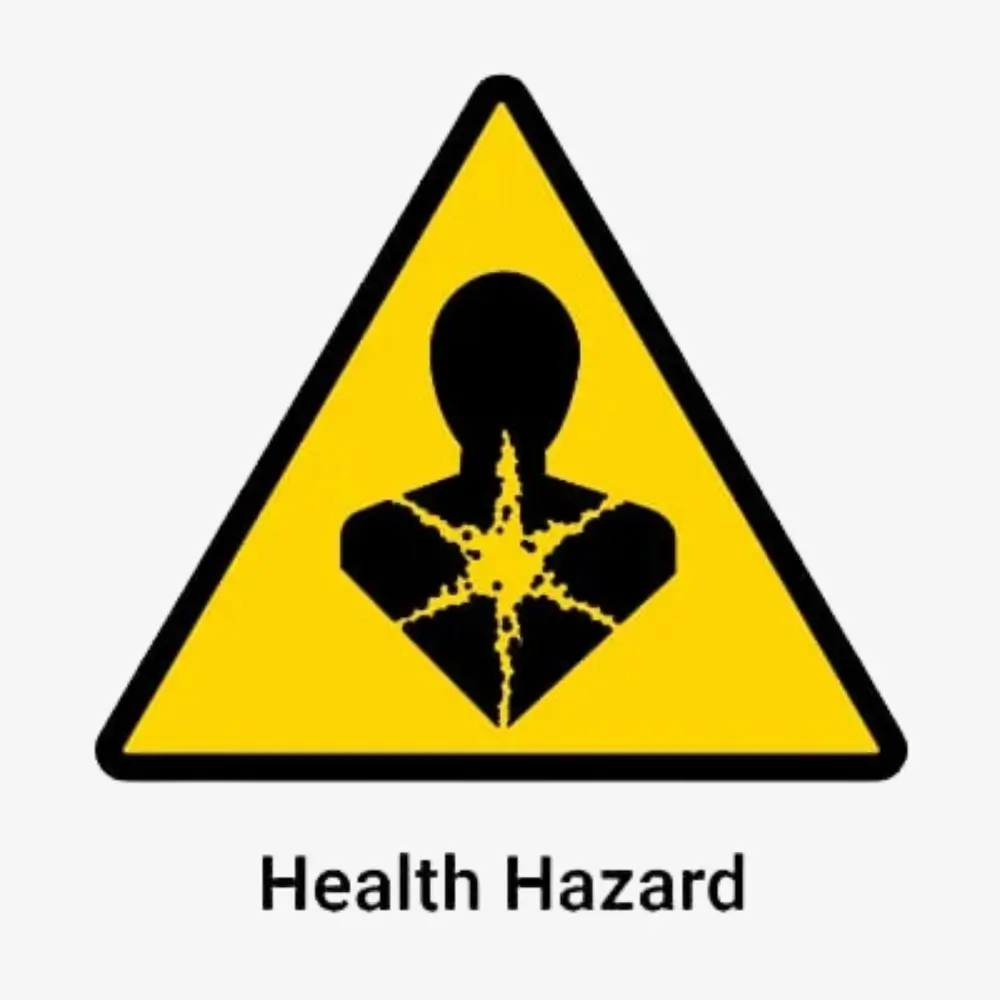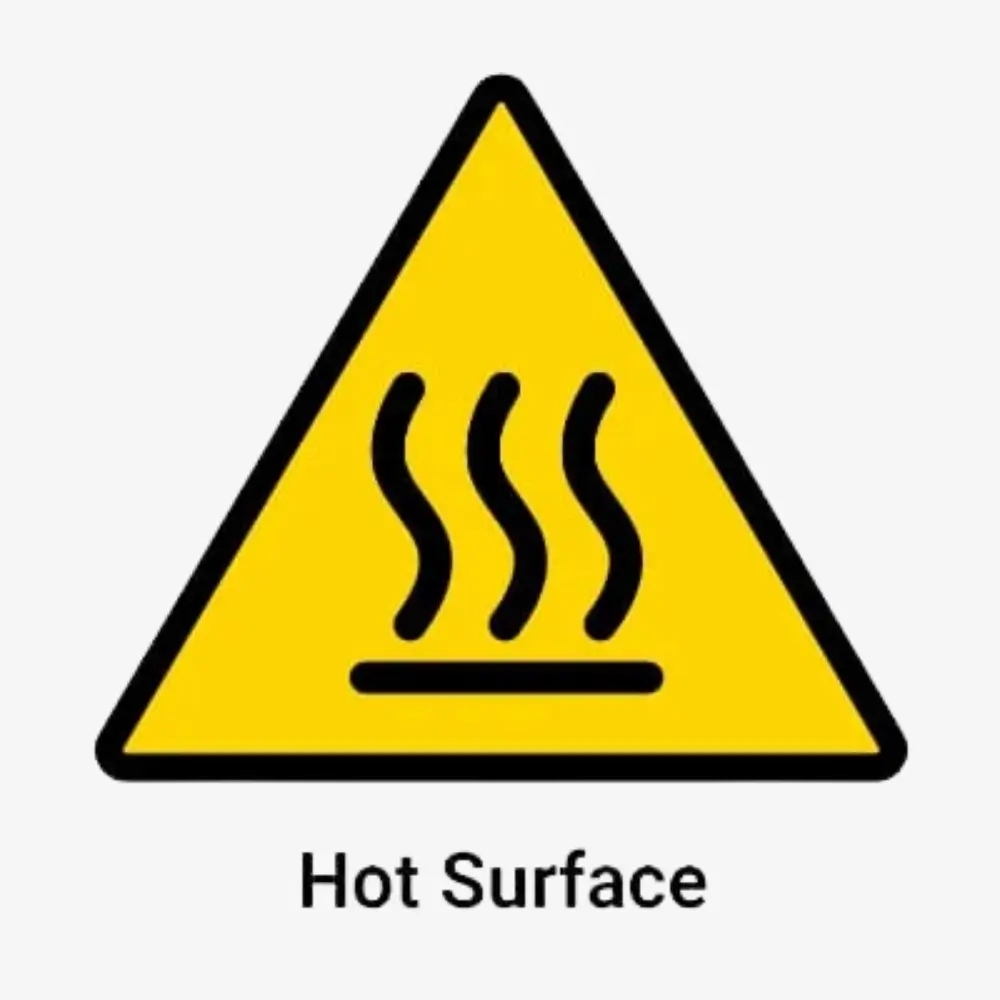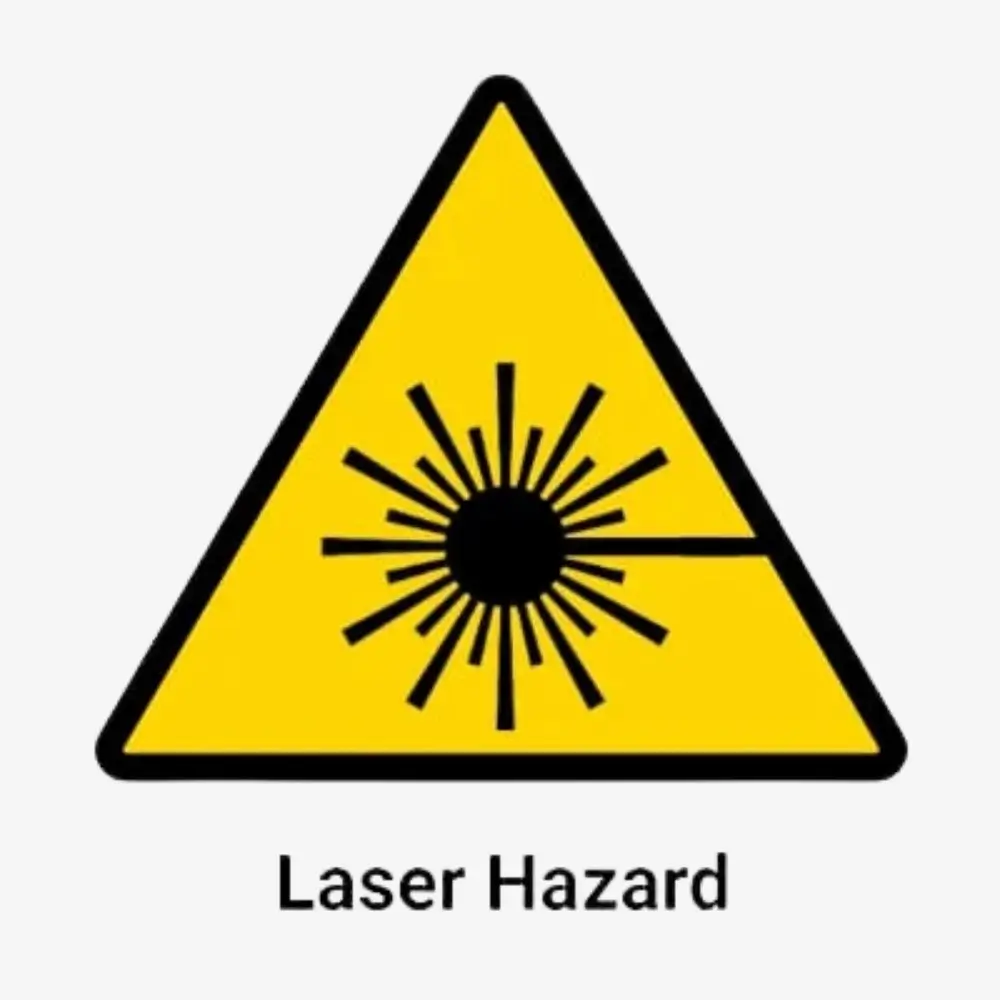Laboratories are environments filled with opportunities for innovation and discovery, but they also come with various risks and hazards. Whether working with hazardous chemicals, biological agents, high-powered equipment, or extreme temperatures, safety in the lab must always be a top priority. Laboratory safety symbols play a critical role in maintaining a secure environment, serving as visual cues to communicate potential dangers, required precautions, and restricted actions.
This comprehensive guide explores 50+ laboratory safety symbols and signs and their meanings, providing you with a detailed understanding of how these symbols contribute to creating a safe and efficient workplace. Each category is designed to help you recognize and respond to specific risks, from warning and hazard signs to biological and chemical hazard symbols. Additionally, we’ll cover symbols for entry and working requirements, different stations, object locations, and prohibited actions.
Understanding these symbols not only minimizes the risk of accidents and injuries but also fosters a culture of safety and compliance with legal regulations. Whether you are a seasoned professional or new to the lab environment, mastering these symbols is an essential step in ensuring safety for yourself and others. Let’s dive into the essential symbols and their meanings to make your laboratory a safer place to work.
Warning and Hazard Symbols in the Lab
Laboratory warning and hazard symbols are essential visual indicators communicating potential risks in a particular area or with certain substances and equipment. They serve as a universal language to ensure everyone in the lab can recognize hazards and take the necessary precautions. Below is an explanation of the provided symbols:
General Warning

The General Warning symbol, represented by an exclamation mark inside a triangle, is a broad alert indicating the presence of potential hazards in the area. It does not specify the exact nature of the risk but serves as a reminder to exercise caution.
Indication:
- Signals potential exposure to various chemical, physical, or biological hazards.
- Could include risks like spills, slippery surfaces, or equipment malfunctions.
- Warns that the area or material requires careful handling and observation.
What to Do:
- Pay attention to additional signs or instructions in the area.
- Follow general safety protocols and lab-specific guidelines.
- Use appropriate personal protective equipment (PPE), such as gloves and goggles.
Health Hazard

The Health Hazard symbol, represented by a silhouette of a person with a starburst on the chest, indicates the presence of agents that can have long-term health effects.
Indication:
- Warns about substances that are carcinogenic, mutagenic, or harmful to reproductive health.
- Highlights risks of organ damage, respiratory sensitivity, or chronic toxicity.
What to Do:
- Always refer to the material’s Safety Data Sheet (SDS) for handling instructions.
- Use appropriate PPE, such as lab coats, gloves, goggles, and respirators.
- Work in well-ventilated areas or use fume hoods when handling such materials.
Biological Hazard Symbols in the Lab
These symbols represent biological substances that have the potential to negatively affect human health or the health of any living being. The presence of pathogenic microorganisms, toxins, viruses, virulent proteins, body fluids, and body fluid-contaminated materials is indicated by these symbols.
1. Biological Hazard

The Biological Hazard symbol, represented by a circular emblem with three interlocking loops, indicates the presence of biohazardous materials.
Indication:
- Warns of pathogenic microorganisms, viruses, body fluids, toxins, or contaminated materials that can pose health risks.
What to Do:
- Use appropriate personal protective equipment (PPE), including gloves, face shields, and lab coats.
- Dispose of biological waste in designated biohazard containers.
- Follow proper decontamination and sterilization protocols.
2. Biosafety Level 1

The Biosafety Level 1 symbol indicates the presence of organisms classified under Risk Group 1, which usually do not cause disease in healthy adults.
Indication:
- Presence of organisms with minimal potential hazards to lab personnel and the environment.
- Effective treatment and preventive measures are available.
What to Do:
- Maintain standard microbiological practices.
- Wear lab coats and gloves when handling materials.
- Ensure proper handwashing and surface decontamination.
3. Biosafety Level 2

The Biosafety Level 2 symbol indicates the presence of organisms in Risk Group 2, capable of causing mild infections and moderate hazards.
Indication:
- Organisms that can cause infections but are difficult to spread via aerosols.
- Effective treatment or preventive measures exist.
What to Do:
- Use biosafety cabinets for procedures that may generate aerosols.
- Wear appropriate PPE, including gloves, lab coats, and face shields.
- Handle infectious agents with enhanced care and follow sterilization guidelines.
4. Biosafety Level 3

The Biosafety Level 3 symbol warns of Risk Group 3 organisms that can cause severe infections and spread via aerosols.
Indication:
- Organisms pose a high individual risk and moderate community risk.
- Treatment and prevention measures are limited but available.
What to Do:
- Work in containment labs with controlled access.
- Use respiratory protection and HEPA-filtered biosafety cabinets.
- Ensure strict adherence to sterilization and waste disposal procedures.
5. Biosafety Level 4

The Biosafety Level 4 symbol indicates the presence of Risk Group 4 organisms that have a high potential to cause serious infections with no available treatment or prevention measures.
Indication:
- Organisms have a very high transmission rate and pose significant risks to individuals and communities.
What to Do:
- Only trained personnel should handle these agents in maximum-containment laboratories.
- Use full-body, air-supplied suits and work in pressurized, controlled environments.
- Follow strict emergency protocols in case of exposure.
Chemical Hazard Symbols in the Lab
Chemical hazard symbols are used to indicate the presence of chemical substances that have the potential to harm humans, animals, or the environment. They are essential for ensuring safe handling and awareness of the dangers associated with specific chemicals.
1. Poison/Poisonous Materials

The Poison symbol, often represented by a skull and crossbones, indicates the presence of toxic materials.
Indication:
- Warns of substances that can cause severe health effects or death if ingested, inhaled, or absorbed through the skin.
What to Do:
- Avoid direct contact or inhalation of the substance.
- Use appropriate PPE, such as gloves, goggles, and respirators.
- Store securely and follow disposal protocols for hazardous chemicals.
2. Carcinogenic

The Carcinogenic symbol, represented by a silhouette of a person with a starburst on the chest, indicates the presence of carcinogenic substances.
Indication:
- Highlights the risk of substances capable of causing cancer or genetic mutations.
- Found in chemicals that pose long-term health risks.
What to Do:
- Limit exposure and work in well-ventilated areas or under a fume hood.
- Wear suitable PPE, including lab coats, gloves, and face masks.
- Follow strict handling and disposal guidelines as outlined in the chemical’s Safety Data Sheet (SDS).
3. Corrosive Material Hazard

The Corrosive Material Hazard symbol, showing a liquid spilling onto a hand and a surface, indicates the presence of corrosive substances.
Indication:
- Warns of chemicals that can cause severe burns to skin and eyes or corrode metals.
- Examples include strong acids (e.g., hydrochloric acid) and alkalis (e.g., sodium hydroxide).
What to Do:
- Use acid-resistant gloves, aprons, and goggles when handling such substances.
- Handle with care in designated areas equipped with emergency eye wash and shower stations.
- Store corrosive materials in compatible, labeled containers away from incompatible substances.
4. Harmful Irritants

The Harmful Irritants symbol, represented by an exclamation mark inside a triangle, indicates the presence of chemicals that can cause irritation.
Indication:
- Warns of substances that may cause skin, eye, or respiratory irritation upon contact or exposure.
- Examples include mild acids, cleaning agents, or solvents.
What to Do:
- Wear appropriate PPE, such as gloves and safety goggles.
- Ensure proper ventilation while handling irritants.
- Wash affected areas immediately if contact occurs and seek medical attention if irritation persists.
These chemical hazard symbols serve as critical reminders of the risks associated with specific materials in the lab. Recognizing and understanding these symbols ensures safe handling, storage, and disposal of hazardous chemicals while minimizing potential harm.
Physical Material Hazard Symbols in the Lab
Physical material hazard symbols indicate the presence of substances, conditions, or factors that can harm humans, animals, or the environment. These hazards can arise from physical conditions like heat, cold, electricity, radiation, and mechanical risks.
1. High Voltage

The High Voltage symbol, often depicted as a lightning bolt inside a triangle, warns of the supply of high-voltage electricity.
Indication:
- Alerts to the presence of electrical systems with high voltage that can cause serious injury or death.
What to Do:
- Avoid direct contact with electrical components.
- Ensure proper insulation of wires and circuits.
- Use appropriate protective gear like rubber gloves and boots.
2. Electric Hazard

The Electric Hazard symbol, also shown with a lightning bolt, indicates the risk of electric shock.
Indication:
- Highlights devices or systems that may give mild to severe electric shocks upon contact.
What to Do:
- Turn off equipment before servicing or handling electrical components.
- Use insulated tools and equipment.
- Avoid using devices near water.
3. Cryogenic Hazard

The Cryogenic Hazard symbol, often represented by a snowflake, indicates a low-temperature zone.
Indication:
- Warns about extremely cold substances or environments that can cause frostbite or cold burns.
What to Do:
- Use cryogenic gloves and face shields.
- Handle cryogenic materials like liquid nitrogen with tongs and in ventilated areas.
- Store in appropriate containers.
4. Flammable Material

The Flammable Material symbol, shown as a flame, indicates the presence of combustible substances.
Indication:
- Warns of materials that can easily ignite in the presence of heat, sparks, or open flames.
What to Do:
- Keep flammable materials away from ignition sources.
- Store in fireproof cabinets.
- Ensure the lab is equipped with fire extinguishers.
5. Oxidizing Material

The Oxidizing Material symbol, depicted as a flame over a circle, indicates the presence of oxidizing chemicals.
Indication:
- Warns about substances that can cause or intensify combustion.
What to Do:
- Keep oxidizers away from flammable or combustible materials.
- Store in a cool, dry place.
- Handle with caution and follow proper safety guidelines.
6. Explosive Material

The Explosive Material symbol, represented by a bursting bomb, indicates the presence of substances that can explode.
Indication:
- Warns of self-reactive or explosive chemicals that can cause severe damage.
What to Do:
- Handle explosives in designated areas with minimal vibration.
- Avoid exposure to heat, friction, or shock.
- Follow strict storage protocols.
7. Hot Surface

The Hot Surface symbol, often depicted as a hand above wavy lines, warns about the risk of burns.
Indication:
- Alerts to surfaces or materials that can cause burns if touched.
What to Do:
- Use heat-resistant gloves.
- Avoid direct contact with heated surfaces.
- Allow hot equipment to cool before handling.
8. Ionizing Radiation (Radiation Hazard)

The Radiation Hazard symbol, with three triangular rays and a central circle, indicates the presence of radioactive materials emitting ionizing radiation.
Indication:
- Warns of exposure to ionizing radiation, which can damage living tissues.
What to Do:
- Use lead shields and dosimeters.
- Minimize exposure time and maintain distance.
- Follow strict handling and waste disposal protocols.
9. Non-ionizing Radiation Hazard

The Non-ionizing Radiation Hazard symbol indicates the presence of electromagnetic waves that cannot ionize atoms but can excite electrons.
Indication:
- Highlights risks from UV light, infrared radiation, and microwaves.
What to Do:
- Use appropriate shields and PPE.
- Avoid direct exposure to the source.
10. UV Radiation Hazard

The UV Radiation Hazard symbol warns about the presence of ultraviolet light.
Indication:
- UV light can cause skin burns, eye damage, and long-term health issues.
What to Do:
- Wear UV-blocking goggles and protective clothing.
- Avoid direct exposure to UV sources.
- Use shields or barriers around UV equipment.
11. Laser Hazard

The Laser Hazard symbol indicates the presence of laser radiation.
Indication:
- Warns about the risk of eye or skin injuries from laser beams.
What to Do:
- Wear laser-specific safety goggles.
- Avoid direct exposure to the laser beam.
- Use protective barriers and follow operational guidelines.
12. Glassware Hazard

The Glassware Hazard symbol warns about the presence of broken or fragile glassware.
Indication:
- Highlights risks of cuts or punctures from broken glass.
What to Do:
- Dispose of broken glass in designated containers.
- Handle with gloves and avoid forceful handling of fragile glassware.
- Inspect glassware regularly for cracks or defects.
These physical material hazard symbols are crucial for identifying and mitigating risks associated with various physical factors in the lab. Understanding these symbols ensures safe practices and minimizes the likelihood of accidents or injuries.
Entry/Working Requirement Symbols in the Lab
These symbols indicate the mandatory requirements for personal protective equipment (PPE) before entering or working in specific areas. Following these guidelines ensures safety and minimizes exposure to potential hazards.
1. Gloves Required

The Gloves Required symbol indicates that workers must use protective gloves in the specified area or while performing tasks.
Indication:
- Protects hands from exposure to hazardous chemicals, biological agents, sharp objects, or extreme temperatures.
What to Do:
- Wear gloves appropriate for the task (e.g., nitrile, latex, heat-resistant).
- Inspect gloves for tears or damage before use.
- Dispose of gloves properly after use to prevent contamination.
2. Safety Glasses Required

The Safety Glasses Required symbol indicates that workers must wear protective goggles or safety glasses.
Indication:
- Prevents eye injuries from chemical splashes, flying particles, or harmful rays.
What to Do:
- Use goggles or glasses suitable for the type of hazard.
- Ensure the eyewear fits properly and is free from scratches or cracks.
- Replace damaged or poorly fitting safety glasses immediately.
3. Safety Shoes Required

The Safety Shoes Required symbol indicates that workers must wear closed-toe, protective footwear.
Indication:
- Protects feet from heavy objects, sharp tools, spills, or other physical hazards.
What to Do:
- Wear safety shoes with steel-toe caps or chemical-resistant soles, as necessary.
- Avoid wearing open-toe footwear in restricted areas.
- Maintain footwear in good condition for effective protection.
4. Lab Coat Required

The Lab Coat Required symbol indicates that workers must wear a lab coat or apron in the area.
Indication:
- Protects against chemical spills, splashes, and potential contamination.
What to Do:
- Wear lab coats made of flame-resistant or chemical-resistant materials.
- Ensure the coat is properly fastened and covers the upper body.
- Remove and clean the coat after use to avoid spreading contaminants.
5. Protective Clothing Required

The Protective Clothing Required symbol indicates that workers must wear full-body protective clothing.
Indication:
- Protects against exposure to hazardous chemicals, biological agents, or extreme environments.
What to Do:
- Wear protective clothing that fits well and is appropriate for the hazard.
- Inspect for tears or defects before use.
- Replace damaged protective clothing immediately.
6. Respirator Required

The Respirator Required symbol indicates that workers must wear a breathing mask or respirator.
Indication:
- Protects against inhalation of harmful gases, vapors, or particulates in contaminated air.
What to Do:
- Use the appropriate type of respirator for the substance (e.g., N95, full-face mask).
- Ensure proper fit and seal of the respirator.
- Replace filters or cartridges regularly as per guidelines.
7. Face/Safety Mask Required

The Face Mask Required symbol indicates that workers must wear a face, dust, or safety mask.
Indication:
- Protects against exposure to airborne particles, dust, or chemical fumes.
What to Do:
- Select the mask type based on the level of exposure and task requirements.
- Check for proper fit and secure the mask snugly.
- Dispose of disposable masks correctly and sanitize reusable ones.
8. Face Shield Required

The Face Shield Required symbol indicates that workers must wear a face shield while working.
Indication:
- Protects the face from chemical splashes, flying debris, or thermal hazards.
What to Do:
- Wear the face shield in addition to safety goggles, if required.
- Ensure the shield covers the entire face.
- Clean and disinfect the shield after use.
9. Hair Protection Required

The Hair Protection Required symbol indicates that workers must secure their hair before working.
Indication:
- Prevents hair from getting caught in machinery or exposed to hazardous substances.
What to Do:
- Wear hairnets or caps as appropriate.
- Keep long hair tied back securely.
- Inspect hair protection for cleanliness and proper fit.
10. Hearing Protection Required

The Hearing Protection Required symbol indicates that workers must use hearing protection devices.
Indication:
- Protects against exposure to high noise levels that can cause hearing damage.
What to Do:
- Use earplugs, earmuffs, or other hearing protection devices as needed.
- Ensure a proper fit for effective noise reduction.
- Replace hearing protection devices regularly if they show signs of wear.
By following these symbols and their corresponding safety measures, laboratory personnel can minimize risks and maintain a safe working environment.
Different Stations Symbols in the Lab
These symbols specify designated locations where specific tasks must be performed. They ensure that tasks are completed efficiently and safely while preventing misuse of resources or equipment.
1. Hand Wash Station

The Hand Wash Station symbol indicates a designated area for washing hands.
Indication:
- Marks a station specifically for washing hands to maintain hygiene and prevent contamination.
What to Do:
- Wash hands thoroughly with soap and water at this station.
- Do not use this station for other purposes, such as washing equipment or chemicals.
- Ensure the station is kept clean and accessible at all times.
2. Eye Wash Station

The Eye Wash Station symbol indicates a station for rinsing eyes in case of exposure to harmful substances.
Indication:
- Provides a quick response to flush out irritants, chemicals, or debris from the eyes.
What to Do:
- Use this station immediately if your eyes are exposed to harmful substances.
- Activate the eye wash flow and rinse your eyes for at least 15 minutes.
- Avoid using this station for washing hands or other materials.
3. Shower Station

The Shower Station symbol indicates an area equipped for emergency body rinsing.
Indication:
- Used to wash off hazardous substances that may have spilled or splashed on the body.
What to Do:
- Use the shower immediately in case of significant chemical spills or burns on your body.
- Stand under the shower and rinse for a minimum of 15 minutes.
- Do not use this station for any non-emergency purposes.
4. Hand Sanitization Station

The Hand Sanitization Station symbol indicates a station for sanitizing hands.
Indication:
- Provides a location for disinfecting hands to reduce microbial contamination.
What to Do:
- Use the sanitizer provided to clean hands before and after handling lab materials.
- Do not use this station for washing hands or other activities.
- Keep the station stocked with sanitizers.
5. Emergency Meeting Station

The Emergency Meeting Station symbol indicates a designated meeting point for lab personnel during emergencies.
Indication:
- Serves as a gathering point for lab staff to receive instructions or account for personnel during emergencies.
What to Do:
- Proceed to this station promptly during emergency situations.
- Stay at the meeting point until instructed otherwise by lab supervisors.
- Do not use this area for routine work or unrelated tasks.
These station symbols guide lab personnel to designated areas for specific purposes, ensuring safety, efficiency, and the proper use of resources. Following these instructions minimizes risks and helps maintain a well-organized laboratory environment.
Location Symbols of Specific Objects in the Lab
These symbols help identify the locations of specific materials or devices essential for emergencies or daily laboratory functions. Recognizing these symbols ensures quick access and appropriate usage in urgent situations.
1. Fire Extinguisher

The Fire Extinguisher symbol indicates the location of a fire extinguisher.
Indication:
- Marks the designated area where a fire extinguisher is stored for use in case of a fire.
What to Do:
- Familiarize yourself with the location and type of fire extinguisher available.
- Use the extinguisher only for its intended class of fire (e.g., chemical, electrical, etc.).
- Ensure the area remains unobstructed for easy access.
2. First Aid

The First Aid symbol indicates the location of a first aid box and materials.
Indication:
- Marks the place where basic medical supplies are stored for treating minor injuries or stabilizing serious injuries until professional help arrives.
What to Do:
- Know the location of the first aid kit and ensure it is well-stocked.
- Use the supplies only for medical purposes.
- Report any used or missing items so they can be replaced.
3. Drinking Water

The Drinking Water symbol indicates the availability of safe drinking water.
Indication:
- Specifies a station with potable water for drinking.
What to Do:
- Use this source only for drinking water.
- Avoid contaminating the water supply or station.
- Do not use this area for washing hands, equipment, or disposing of waste.
4. Fire Blanket

The Fire Blanket symbol indicates the location of a fire blanket.
Indication:
- Marks the area where a fire blanket is stored, used to smother fires or wrap around individuals whose clothing has caught fire.
What to Do:
- Familiarize yourself with the location and usage instructions of the fire blanket.
- Use it to extinguish small fires or protect yourself in fire emergencies.
- Ensure the fire blanket is accessible and properly stored.
5. Fire Hose

The Fire Hose symbol indicates the location of a fire hose.
Indication:
- Identifies the area where a hose with water or other fire-retardant substances is placed for extinguishing fires.
What to Do:
- Use the hose only for fire emergencies.
- Check for proper operation during routine safety inspections.
- Keep the area clear for easy access.
6. Emergency Bell

The Emergency Bell symbol indicates the presence of an emergency alarm system.
Indication:
- Marks the button or bell to be activated during emergencies, such as fires, chemical spills, or accidents.
What to Do:
- Press the bell immediately in case of an emergency to alert others.
- Ensure the area around the bell is unobstructed.
- Familiarize yourself with the protocol that follows the activation of the alarm.
These location symbols play a critical role in ensuring a safe and well-prepared laboratory environment. Recognizing and adhering to these symbols ensures quick and efficient responses during emergencies and promotes proper utilization of resources.
Prohibition Symbols in the Lab
Prohibition symbols indicate actions or items that are not allowed in a specific area. These symbols are typically depicted with a red circle and a diagonal line crossing the figure. Adhering to these symbols helps maintain safety and prevent accidents.
1. Restricted Entry

The Restricted Entry symbol indicates that only authorized personnel are allowed in the area.
Indication:
- Prevents unauthorized access to sensitive or hazardous zones.
What to Do:
- Verify authorization before entering the area.
- Follow access protocols, including wearing appropriate identification.
- Avoid entry without proper training or clearance.
2. Food and Drink Prohibited

The Food and Drink Prohibited symbol indicates that eating or drinking is not allowed in the area.
Indication:
- Prevents contamination of experiments or exposure to harmful substances through ingestion.
What to Do:
- Avoid bringing food or beverages into the lab.
- Consume food only in designated areas outside the lab.
- Dispose of food-related waste properly to maintain cleanliness.
3. No Open Flame

The No Open Flame symbol indicates that the use of open flames is prohibited.
Indication:
- Warns about the presence of highly flammable or temperature-sensitive materials.
What to Do:
- Use alternative heating methods, such as electric hot plates, if necessary.
- Avoid lighting matches, candles, or Bunsen burners in this area.
- Follow specific lab instructions for heating materials safely.
4. No Light

The No Light symbol indicates that the area must remain dark.
Indication:
- Protects photo-sensitive materials from light exposure, which can alter their properties.
What to Do:
- Avoid turning on lights or using light-emitting devices.
- Use low-intensity or specific wavelength-safe lighting if necessary.
- Follow handling procedures for photo-sensitive substances.
5. No Open Shoes

The No Open Shoes symbol indicates that wearing open-toe shoes is not permitted.
Indication:
- Prevents foot injuries from spills, falling objects, or chemical splashes.
What to Do:
- Wear closed-toe shoes made of sturdy material (e.g., leather or rubber).
- Ensure footwear is appropriate for the lab environment and tasks.
- Avoid wearing sandals or flip-flops in the lab.
6. No Open Hair

The No Open Hair symbol indicates that uncovered hair is not allowed in the area.
Indication:
- Prevents hair from getting caught in machinery or contaminating experiments.
What to Do:
- Tie back long hair securely.
- Wear hairnets or caps if required by lab protocol.
- Keep hair covered to maintain a safe and hygienic environment.
7. No Electronics

The No Electronics symbol indicates that electronic devices are not permitted in the area.
Indication:
- Prevents interference with sensitive equipment or the risk of fire from sparks.
What to Do:
- Leave personal electronic devices, such as phones and laptops, outside the lab.
- Use lab-approved equipment for data recording or communication.
- Follow guidelines for electronic device usage in specific areas.
8. No Gloves

The No Gloves symbol indicates that gloves must be removed before entering or working in the area.
Indication:
- Prevents contamination or the transfer of hazardous substances from gloves to clean zones or equipment.
What to Do:
- Remove gloves when leaving hazardous areas or handling non-contaminated materials.
- Dispose of used gloves properly in designated bins.
- Wash hands thoroughly after glove removal.
Prohibition symbols ensure that lab personnel understand and comply with specific restrictions to maintain safety, cleanliness, and procedural integrity. Following these symbols reduces the risk of accidents, contamination, and equipment damage in the lab environment.
Benefits of Laboratory Safety Symbols
Laboratory safety symbols are essential tools for promoting a safe and efficient working environment. They clearly and immediately communicate hazards, precautions, and safety requirements, ensuring that lab personnel are informed and protected.
1. Universal Communication
Laboratory safety symbols provide a universal language for safety, making them easily understandable by individuals regardless of their language or cultural background. These symbols use simple visual cues to indicate hazards and necessary precautions, ensuring that everyone in the lab can recognize potential risks. This helps create a standardized approach to safety across diverse workplaces.
Key Points:
- Transcends language barriers.
- Universally recognizable symbols ensure inclusivity.
- Standardizes safety protocols across labs globally.
2. Prevention of Accidents
Safety symbols play a critical role in reducing accidents by reminding personnel of specific hazards and precautions. They provide constant visual alerts that guide individuals to act cautiously and avoid dangerous behaviors. By serving as reminders, they significantly reduce the likelihood of errors and accidents in the laboratory environment.
Key Points:
- Acts as visual reminders of hazards.
- Reduces human errors and promotes caution.
- Minimizes risk of injuries and equipment damage.
3. Quick Identification of Hazards
These symbols allow for the rapid identification of risks and their associated safety measures. They help personnel recognize hazards immediately, enabling quick decisions and timely precautions. This rapid hazard identification is particularly crucial in emergency situations, where quick action can prevent escalation.
Key Points:
- Enables immediate recognition of hazards.
- Facilitates quick decision-making in emergencies.
- Ensures timely implementation of safety measures.
4. Compliance with Safety Regulations
Laboratory safety symbols ensure compliance with national and international safety standards. Regulations often mandate the use of these symbols to maintain a safe working environment, helping labs avoid legal penalties and ensuring worker safety. Proper use of these symbols demonstrates a commitment to safety and professionalism.
Key Points:
- Ensures adherence to safety regulations.
- Helps avoid legal and regulatory penalties.
- Enhances lab credibility and professionalism.
5. Promotes Safe Work Culture
Using safety symbols consistently fosters a culture of safety awareness among lab personnel. It reinforces the importance of following safety protocols and encourages individuals to take ownership of their own safety. This collective responsibility helps maintain a safer and more efficient lab environment.
Key Points:
- Reinforces safety awareness and habits.
- Encourages personal responsibility for safety.
- Contributes to a safer and more productive lab culture.
Conclusion
Laboratory safety symbols are more than just visual aids; they are vital tools that safeguard lives, protect valuable research, and maintain the integrity of the working environment. By understanding and adhering to these symbols, lab personnel can identify potential hazards, take the necessary precautions, and prevent accidents or injuries. Each symbol is crucial in promoting safety and efficiency, from warning signs and hazard indicators to specific entry requirements and emergency stations.
A well-informed team that respects and follows these symbols contributes to a culture of safety where risks are minimized, and productivity is maximized. Whether it’s recognizing a biological hazard, wearing the required protective equipment, or knowing where to locate emergency supplies, being aware of these symbols ensures preparedness and compliance with safety standards.
In conclusion, laboratory safety symbols are an indispensable part of any lab. By incorporating them into daily routines, we protect ourselves and ensure the success and sustainability of our scientific endeavors. Let’s continue to prioritize safety and create a lab environment where innovation thrives without compromise.

